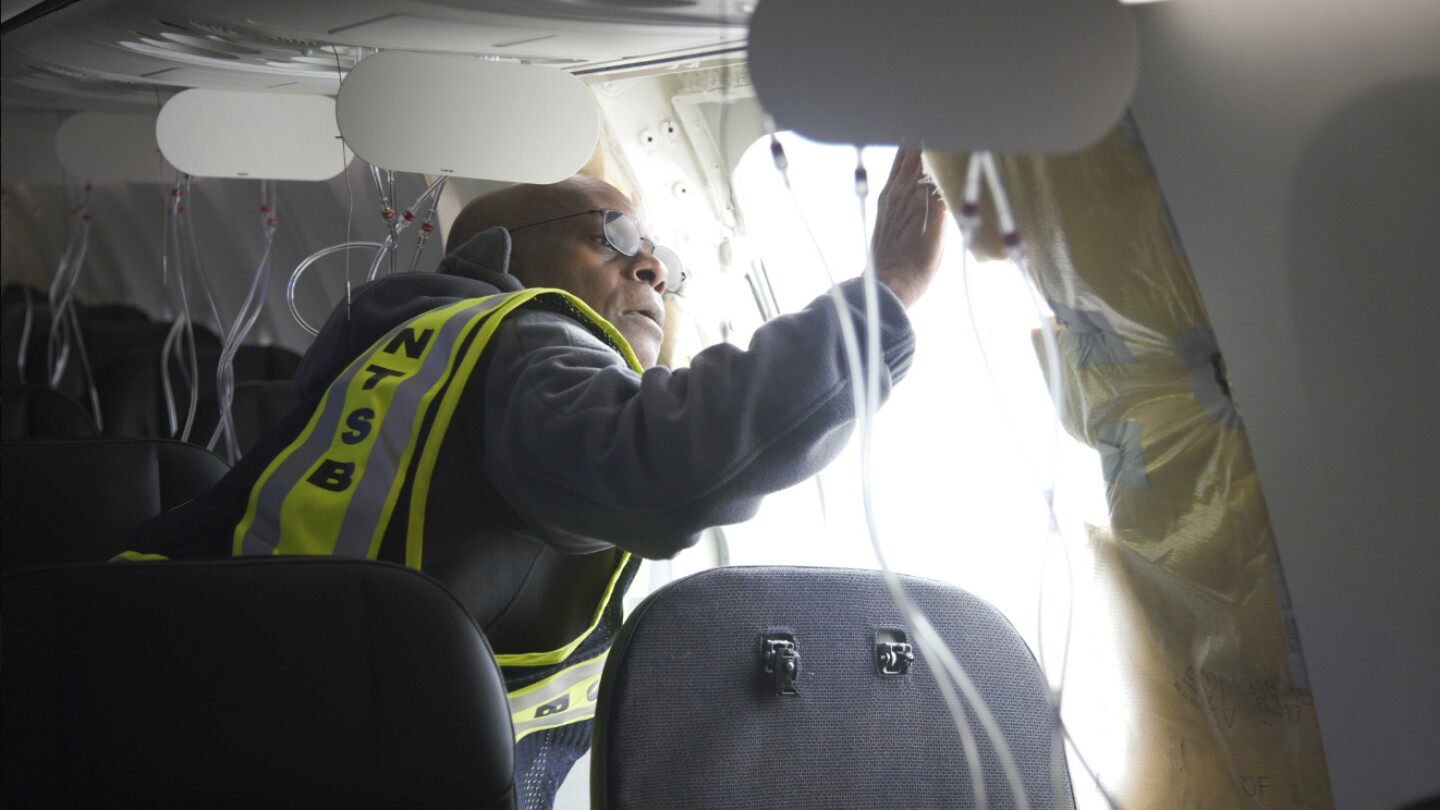The Boeing jetliner that suffered an inflight blowout over Oregon was not being used for flights to Hawaii after a warning light that could have indicated a pressurization problem lit up on three different flights, a federal official said Sunday.
Alaska Airlines decided to restrict the aircraft from long flights over water so the plane “could return very quickly to an airport” if the warning light reappeared, said Jennifer Homendy, chair of the National Transportation Safety Board.
Homendy cautioned that the pressurization light might be unrelated to Friday’s incident in which a plug covering an unused exit door blew off the Boeing 737 Max 9 as it cruised about three miles (4.8 kilometers) over Oregon.
The warning light came on during three previous flights: on Dec. 7, Jan. 3 and Jan. 4 — the day before the door plug broke off. Homendy said she didn’t have all the details regarding the Dec. 7 incident but specified the light came on during a flight on Jan. 3 and on Jan. 4 after the plane had landed.



Ok, for the uninitiated, this is a simplification of how it works:
You get a warning/caution light. Either the cause is real because the thing it’s warning you about did happen, or it didn’t.
I.e. Generator Fail - all electrical systems still working normal? Go to electrical systems page and generator still working fine? Amp/volt normal? Fail indicator on generator switch not on?
If all things indicate the generator is still functioning normally, you may have the option to not follow a checklist item that might have you disconnect the generator from the system, but let’s assume in this case the crew is allowed to continue operating the generator normally.
This would absolutely be required to be checked by maintenance, and would be written in an aircraft maintenance log.
Maintenance would check everything, and let’s assume their checks show nothing wrong, so they reset the system and the warning goes away. Check it again, and if it all looks ok, send the airplane on its way.
Let’s say the Fail warning comes back on again 2 days later.
They’ll go through the same procedure.
Now it happens again 3 days later. Here’s usually where it gets flagged as a repeat problem and the aircraft might get pulled from service, depending on the particular airline’s policy, to find out what is going on with it. Maybe Alaska doesn’t have that policy, but it’s not right to keep kicking the can down the road for repeat maintenance problems.
It is not unusual to get system warnings that are wrong. It does not happen often, and when it does happen there’s a very good chance that a reset of the system will correct the issue.
There isn’t enough detail in the article to know what they mean by “pressurization” warning…is it overpressure? Underpressure? There’s a lot of things that could trigger a warning.
I seem to remember reading some planes had monitoring for basically how much makeup air was being put in to keep pressure (which tells you how much leakage there is). If I had to bet, I’d say it’s that.
I say this as someone who is interested in aviation but has no formal education in it.
I’ve flown multiple types of aircraft and do not recall ever having a “high flow” warning on any of them regarding pressurization leaking out, though I will readily admit that I could have forgotten or that it may exist on certain aircraft types. I’ll assume the 737 operates like another Boeing I have flown and such a warning doesn’t exist. You’ll have overpressure warnings and cabin altitude too high (unable to pressurize properly) warnings, but I can almost guarantee that if a door were leaking sufficiently to vent pressurization enough to cause a high cabin altitude warning you would absolutely hear a significant noise coming from the door. Flight attendants are often pretty sharp on aircraft they work on frequently, and any such significant noise would be brought to the attention of the cockpit crew and maintenance. One would hope that such a noise was not present and ignored.
Regarding my musings on over/under pressure…my point was that we don’t know what the system warning was and it could be completely unrelated to the door failing or the integrity of the pressure vessel.